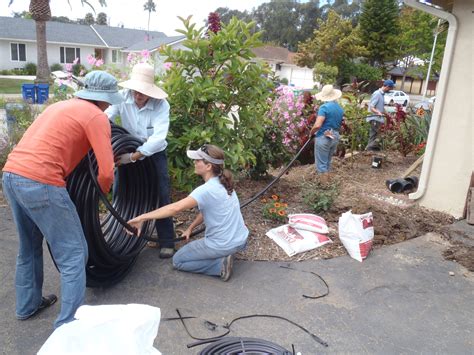The city of Santa Barbara, nestled between the Santa Ynez Mountains and the Pacific Ocean, boasts a unique climate that is characterized by mild winters and warm summers. One of the key factors that influence the climate and daily life in Santa Barbara is rainfall. Understanding the patterns and facts about rainfall in Santa Barbara is crucial for planning various activities, from agriculture and gardening to outdoor events and tourism. Here are 12 rainfall facts about Santa Barbara that can help in better planning and appreciation of this beautiful city’s climate.
Average Annual Rainfall: Santa Barbara receives an average of about 18.96 inches of rainfall per year. This average is based on data collected over many years and provides a baseline for what to expect in terms of overall precipitation.
Seasonal Variation: The majority of Santa Barbara’s rainfall occurs during the winter months, from December to March. This seasonal variation is due to the city’s Mediterranean climate, where winters are typically wet and summers are dry.
Wettest Month: February is usually the wettest month in Santa Barbara, with an average of around 4.5 inches of rain. This is a critical piece of information for planning outdoor activities during the winter.
Driest Month: July and August are typically the driest months, with very little to no rainfall. This period of dryness is characteristic of the Mediterranean climate and has significant implications for water management and gardening.
Extreme Weather Events: While rare, Santa Barbara can experience extreme weather events such as storms that bring heavy rainfall. These events can significantly impact daily life and highlight the importance of being prepared for unexpected weather conditions.
Rainfall Variability: There is considerable year-to-year variability in rainfall totals. Some years may receive significantly more or less rainfall than the average, which can have profound effects on local ecosystems, water supply, and agricultural planning.
Impact on Local Ecosystems: The rainfall in Santa Barbara supports a diverse range of local ecosystems. The wet winters and dry summers have led to the evolution of unique plant species that are adapted to these conditions, such as chaparral and coastal sage scrub.
Water Conservation: Given the variability and overall limited amount of rainfall, water conservation is a significant concern in Santa Barbara. The city and its residents often implement various measures to conserve water, especially during dry years.
Rainfall and Tourism: For tourists, understanding the rainfall patterns can help in planning visits. While the rain might deter some outdoor activities, the wet season can also bring beautiful landscapes and fewer crowds, making it an attractive time to visit for those who enjoy milder weather.
Agricultural Impact: The rainfall patterns have a direct impact on agriculture in and around Santa Barbara. Farmers and gardeners must carefully plan their planting and harvesting schedules according to the expected rainfall, making the most of the wet season to support crop growth.
Flooding Risks: Although less common, heavy rainfall can lead to flooding, especially in areas with poor drainage. Being aware of the potential for flooding is crucial for public safety and infrastructure planning.
Climate Change Implications: Climate change is expected to alter rainfall patterns globally, including in Santa Barbara. Understanding these potential changes is vital for long-term planning, as shifts in rainfall could impact everything from water supply management to the risk of wildfires and floods.
In conclusion, rainfall plays a pivotal role in shaping the climate, ecosystems, and daily life in Santa Barbara. By understanding and appreciating these rainfall facts, residents and visitors can better plan their activities, contribute to water conservation efforts, and enjoy the unique beauty that each season brings to this charming city.
What is the average annual rainfall in Santa Barbara?
+Santa Barbara receives an average of about 18.96 inches of rainfall per year.
When is the wettest month in Santa Barbara?
+February is usually the wettest month, with an average of around 4.5 inches of rain.
How does rainfall impact local ecosystems in Santa Barbara?
+The rainfall supports a diverse range of local ecosystems, including chaparral and coastal sage scrub, which are adapted to the wet winters and dry summers.



